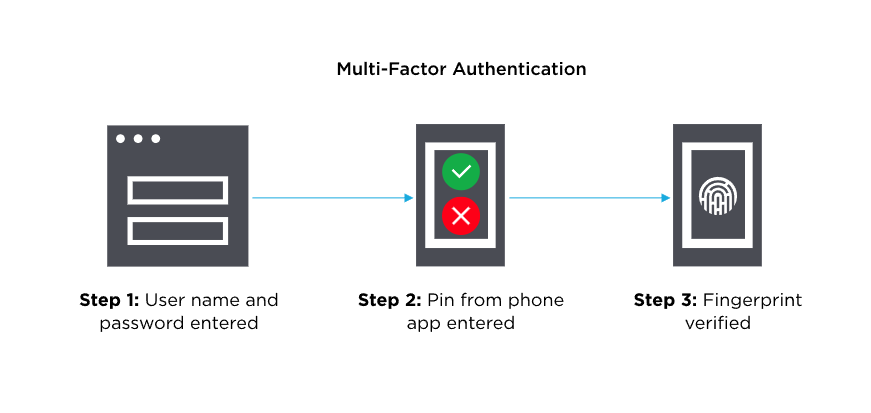Multifactor Authentication and why it is important
Categories: Cyber Security Awareness Month Information Security
Many people are seeing more and more services requiring or suggesting the use of multifactor authentication (MFA) for accessing online systems. MFA is a login process that requires multiple methods of authentication to verify a user’s identity. It combines two or more independent credentials to verify a login.
- The first credential is based on something the user knows. Typically, it requires the user to answer a personal security question. This can be in the form of a password, personal identification number (PIN), or a one-time password.
- The second credential is based on something that only the user can access, such as their personal phone or tablet. Things like a badge, token, key fob, or even just your phone all would meet the requirement to be a credential here. One common method will send your phone a text with a code for you to enter before continuing while logging into the service.
- The third credential is something that is physically distinct for each user, also known as the inherence factor. Fingerprints, iris scans, or facial recognition are all examples, however, a third type is rare unless the data being accessed is highly sensitive. Although sometimes this type of verification will be used in place of the second type, very much like your phone’s ability to access secure content with your Face ID.
No matter the type of verification, multifactor authentication adds an extra, usually quick, step when logging into secure sites. This extra step adds a good deal of security to your accounts and great peace of mind.

Multifactor authentication is being used to help increase the security of your accounts and services that may potentially contain sensitive information. MFA helps validate that the person who is accessing the account is an authorized user. It adds another layer of defense for your account, making it harder for someone to gain unauthorized access. This additional layer of defense helps protect you against weak or stolen passwords. NordPass, a security and privacy-focused company, found that “123456”, “password” and “qwerty” are some of the most commonly used passwords in 2022. These types of common passwords are very easy to guess or crack, and just having MFA turned on for those accounts helps keep malicious people out of accounts.
In conclusion, while MFA may take a few extra seconds to verify your identity, the added layer of security makes it that much harder for cyber-criminals to access your private and sensitive data. By verifying your credentials using a method that is physically tied to your person, such as your phone or your Face ID, companies can ensure that your data is that much safer from prying eyes. Please feel free to contact your Computer Support Specialist if you have any questions.